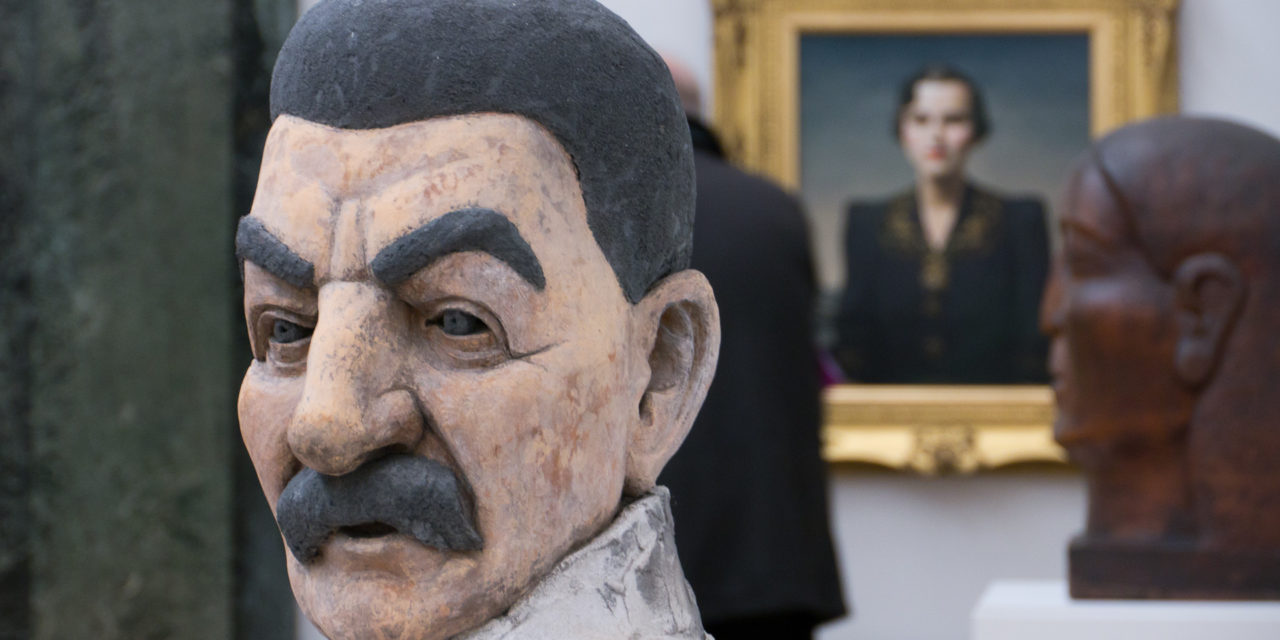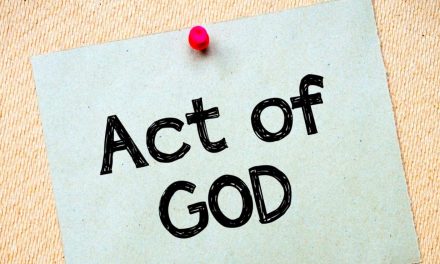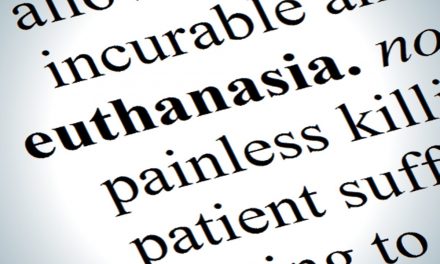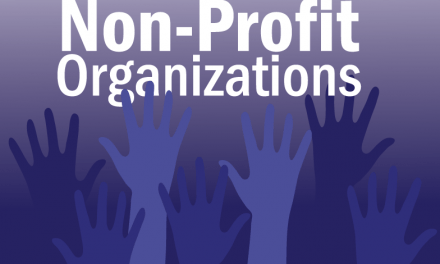കേരളത്തിലെ ഒട്ടനവധി ജനങ്ങൾ മഹാനായ സ്റ്റാലിനെ കുറിച്ച് കേട്ട് വളർന്നവരാണ്. സാധാരണക്കാരായ പലരും സോവിയറ്റ് യൂണിയനെ സാമ്പത്തിക പുരോഗതിയിലേക്കു നയിച്ച, ഫാഷിസത്തിൽ നിന്നും ലോകത്തെ രക്ഷിച്ച ഒരു നേതാവായിട്ടാണ് സ്റ്റാലിനെ കാണുന്നത്. ഇത്തരം ഒരു നിലപാട് എത്രത്തോളം ശരി ആണ്? സ്റ്റാലിന്റെ ജനാധിപത്യ വിരുദ്ധ നടപടികളെ വിശദീകരിക്കുക ആണ് ഈ ലേഖന പരമ്പരയുടെ ഉദ്ദേശം.
സ്റ്റാലിന്റെ പല പ്രവൃത്തികളും കമ്മ്യൂണിസ്റ്റ് (കൂടുതൽ കൃത്യമായി പറഞ്ഞാൽ ബോൾഷെവിസ്റ് അല്ലെങ്കിൽ സ്റ്റാലിനിസ്റ്റ്) ആശയങ്ങളുമായി വളരെ സൂക്ഷമായി ബന്ധപ്പെട്ടതാണ്. അതിന്റെ അർത്ഥം അദ്ദേഹത്തിന്റെ പ്രവൃത്തികളിൽ അദ്ദേഹത്തിന് പങ്കില്ല എന്നോ അതിന്റെ ഉത്തരവാദിത്വത്തിൽ നിന്ന് അദ്ദേഹത്തിന് ഒഴിഞ്ഞു മാറാമെന്നോ അല്ല. ജനാധിപത്യ വ്യവസ്ഥിതിയിലെ ഒരു പ്രധാന മന്ത്രി ആയിരുന്നെകിൽ സ്റ്റാലിന് പല ക്രൂര കൃത്യങ്ങളും ചെയ്യാൻ ഉള്ള അവസരം ലഭിക്കുക ഇല്ലായിരുന്നു. അത് പോലെ തന്നെ, സോവിയറ്റ് യൂണിയനിൽ അന്ന് നില നിന്ന സാഹചര്യങ്ങളിൽ അനിർവാര്യമായ നടപടികൾ എടുക്കേണ്ടി വന്ന കാലത്തിന്റെ ഒരു പാവ മാത്രം ആയിരുന്നില്ല സ്റ്റാലിൻ. നടപടികളുടെ ഗുണ ദോഷ ഫലങ്ങളെക്കുറിച്ചു അറിവ് ഉണ്ടായിട്ടു മനഃപൂർവം എടുത്തതാണ് സ്റ്റാലിന്റെ പല നിലപാടുകളും ലെനിനെ പോലെ തന്നെ സ്റ്റാലിനും തൊഴിലാളി വർഗ സർവ്വാധിപത്യത്തിൽ വിശ്വസിച്ചിരുന്നു. ലെനിന്റെ കാലത്തു സ്ഥാപിച്ച ഈ സർവാധിപത്യം സ്റ്റാലിന്റെ കാലത്തു കൂടുതൽ രൂക്ഷമായി. തൊഴിലാളി വർഗ്ഗത്തിന്റെ അധികാരം , പാർട്ടി വഴി, പോളിറ് ബ്യുറോ വഴി ഒടുവിൽ ഒരു വ്യക്തി ആയ സ്റ്റാലിന്റെ കീഴിൽ കേന്ദ്രീകരിക്കപ്പെട്ടു. തനിക്കെതിരായ എല്ലാ അഭിപ്രായങ്ങളെയും അടിച്ചമർത്താൻ ഇത്തരം ഒരു സംവിധാനം സ്റ്റാലിനെ സഹായിച്ചു. സ്റ്റാലിന്റെ ഏകാധിപത്യ പ്രവണതയും ക്രൂരതയും വ്യക്തമാക്കുന്ന ചില ഉദാഹരണങ്ങൾ നമുക്ക് പരിശോധിക്കാം.
ഏകാധിപതിയായ സ്റ്റാലിന്
യുക്രയ്നിലെ പട്ടിണി മരണങ്ങൾ: 1932-33 കാലത്തു ലക്ഷക്കണക്കിന് മനുഷ്യർ യുക്രൈനിൽ പട്ടിണി കാരണം മരണപ്പെടുക ഉണ്ടായി [1]. ഈ പട്ടിണി മരണങ്ങളെ യുക്രൈനിയൻ ഭാഷയിൽ holodomor എന്നാണ് പറയുന്നത്. 2006 നു ശേഷം യുക്രൈനും മറ്റു അനവധി രാജ്യങ്ങളും ഇത് ഒരു genocide ആയി അംഗീകരിച്ചിട്ടുണ്ട് [2-3]. സ്റ്റാലിന്റെ തെറ്റായ നടപടികൾ ആണ് ഈ പട്ടിണി മരണങ്ങളുടെ അടിസ്ഥാന കാരണം. യുക്രൈൻ അന്നത്തെ USSR ലെ ഏറ്റവും ഫലഭൂയിഷ്ഠമായ റിപ്പബ്ലിക്കുകളിൽ ഒന്നായിരുന്നു. സ്റ്റാലിന്റെ ആദ്യത്തെ പഞ്ച വത്സര പദ്ധതിയുടെയും കലക്റ്റിവൈസേഷന്റെയും ഭാഗമായി യുക്രൈനിയൻ കർഷകരുടെ കൃഷി സ്ഥലങ്ങൾ ബലം പ്രയോഗിച്ചു ഏറ്റെടുക്കുകയും അവരെ കളക്റ്റീവ് കൃഷി സ്ഥലങ്ങളിലേക്ക് മാറ്റുകയും ചെയ്തു. ഇതിനെ എതിർത്ത യുക്രൈനിയൻ കൃഷിക്കാരെ കുലാക്കുകൾ ആയി മുദ്ര കുത്തുകയും അവരെ ഗുലാഗുകളിലേക്കു (കോൺസെൻട്രേഷൻ ക്യാമ്പ് ) അയക്കുകയും ചെയ്തു [4-5]. എന്നാൽ പല കാരണങ്ങൾ കൊണ്ടും കളക്റ്റീവ് കൃഷിയിടങ്ങൾ വിജയിച്ചില്ല [6].
ഈ പരാജയത്തിന്റെ കാരണങ്ങൾ വിശകലനം ചെയ്യുന്നതിനും തന്റെ നടപടികളുടെ തെറ്റ് സമ്മതിക്കുന്നതിനും പകരം, കർഷകർ തനിക്ക് നേരെ നടത്തുന്ന ഒരു പ്രതിഷേധമായാണ് സ്റ്റാലിൻ ഇതിനെ കണ്ടത് [7]. എന്ത് വില കൊടുത്തും ഈ പ്രതിഷേധത്തെ അടിച്ചമർത്താൻ പാർട്ടി തീരുമാനിക്കുകയും ലോക്കൽ നേതാക്കളുടെ മേൽ സമ്മർദ്ദം ചെലുത്തുകയും ചെയ്തു. നിയമങ്ങൾ വളരെ കർക്കശമാക്കി. ഇത്രയും കാലം തന്റേതായിരുന്ന, എന്നാൽ ഇപ്പോൾ കളക്റ്റീവിന്റെ ഭാഗമായ കൃഷി സ്ഥലത്തു നിന്ന് ഒരു ഉരുളക്കിഴങ്ങു മോഷ്ടിച്ചാൽ വധ ശിക്ഷ വരെ കിട്ടും എന്ന സ്ഥിതിയിലേക്ക് കാര്യങ്ങൾ നീങ്ങി [8]. അതിഭീകരമായ പിഴ അടക്കാൻ വേണ്ടി പലരും തങ്ങളുടെ ആടുമാടുകളെ വിൽക്കേണ്ടി വന്നു. ഇത് പല കൃഷിക്കാരെയും പട്ടിണിയിലേക്ക് തള്ളിവിട്ടു [9].
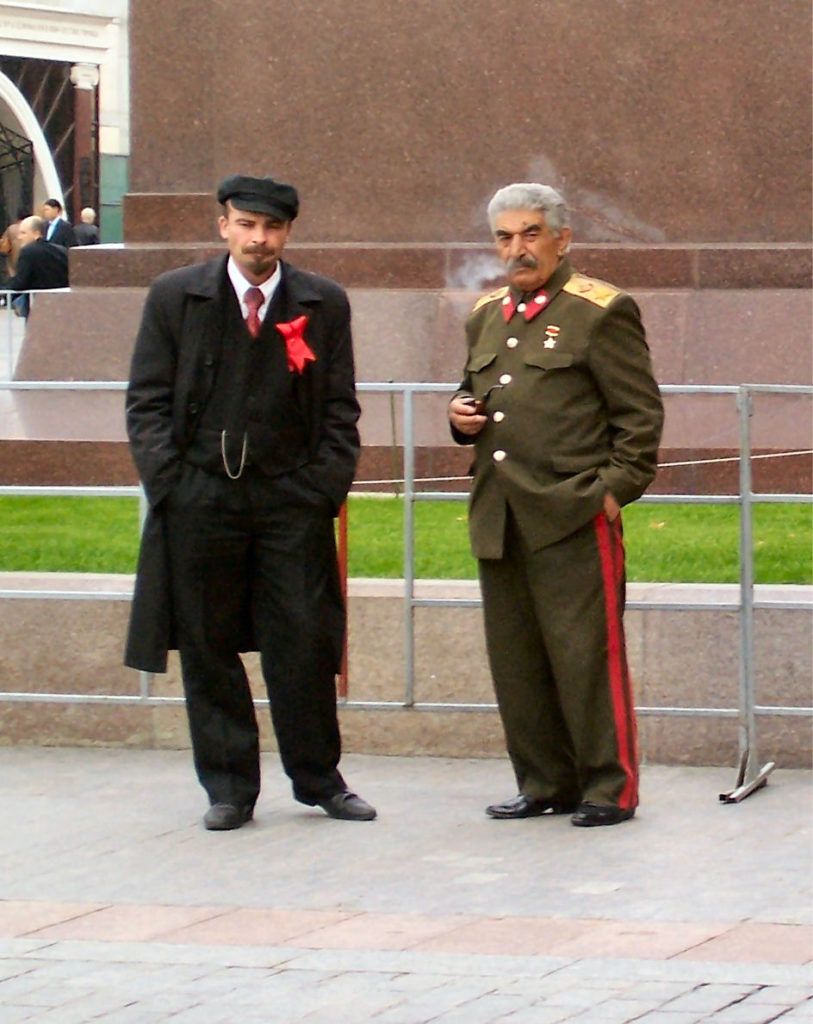
ഈ പട്ടിണിക്കാർ ആയ കൃഷിക്കാരെ സംരക്ഷിക്കുന്നത് അവർ തന്റെ ബലഹീനത ആയി കാണും എന്നത് കാരണം സ്റ്റാലിൻ അവരെ സഹായിച്ചില്ല. മാത്രമല്ല സ്റ്റാലിനെ സംബന്ധിച്ചിടത്തോളം അങ്ങേയറ്റം പ്രാധാന്യമുള്ള ഒരു കാര്യമായിരുന്നു USSR ന്റെ വ്യവസായ വത്കരണം. (അദ്ദേഹത്തിന്റെ യഥാർത്ഥ പേര് മാറ്റി പുതിയ പേര് – സ്റ്റാലിൻ – ഉണ്ടാക്കിയത് സ്റ്റീൽ എന്ന വാക്കിൽ നിന്നും ആണ്). ഈ വ്യവസായ വത്കരണം നടത്താൻ വേണ്ടി യുക്രൈനിലെ കൃഷി ഉത്പന്നങ്ങൾ അന്താരാഷ്ട്ര വിപണയിൽ വിൽക്കുകയും അതിന് പകരമായി വ്യാവസായിക ഉത്പന്നങ്ങൾ വാങ്ങുകയും ചെയ്യുക ആയിരുന്നു പൊതുവേ ഉള്ള സോവിയറ്റു നയം. കാര്യമായും ഗ്രാമങ്ങളെ ആണ് (ഈ ഗ്രാമങ്ങൾ ആണ് കൃഷി ചെയ്യുന്ന സ്ഥലങ്ങൾ ) പട്ടിണി മരണങ്ങൾ ബാധിച്ചത്. ഗ്രാമങ്ങളിൽ നിന്നും ജനങ്ങൾ നഗരങ്ങളിലെക്കു സഞ്ചരിക്കാതിരിക്കാൻ ട്രെ യിനുകൾ റദ്ദു ചെയ്തു [11]. ഈ ക്ഷാമം യുക്രൈനിന്റെ ചരിത്രത്തിലെ ഒരു കറുത്ത അധ്യായം ആണ്. ജീവിക്കാൻ വേണ്ടി പലരും കളവു, പ്രോസ്റ്റിട്യൂഷൻ , മനുഷ്യ മാസം ഭക്ഷിക്കുക തുടങ്ങിയ കാര്യങ്ങൾ വരെ ചെയ്യാൻ നിർബന്ധിതരായി [12]. പട്ടിണി കാരണം മരിച്ചു വീണവർ ഉക്രൈനിലെ ഗ്രാമങ്ങളിലെ ഒരു സ്ഥിരം കാഴ്ച ആയിരുന്നു. പട്ടിണി മരണങ്ങൾ അതിജീവിച്ചവരുടെയും കാര്യം വളരെ കഷ്ടമായിരുന്നു. ക്ഷാമവും പട്ടിണി മരണങ്ങളും സോവിയറ്റ് അധികാരികൾ ഔദ്യോഗികമായി നിഷേധിച്ചു. പക്ഷെ അതിനു ശേഷം നടന്ന സെൻസസ് യുക്രൈനിലെ ജനസംഖ്യയിൽ കുറവ് രേഖപ്പെടുത്തി [13].
സ്റ്റാലിനും ഭരണകൂട ഭീകരതയും
തൊഴിലാളി വർഗ സർവാധിപത്യം എന്ന ആശയത്തിന്റെ അടിസ്ഥാനത്തിൽ രുപീകരിക്കപ്പെട്ട സോവിയറ്റ് ഭരണത്തിന്റെ ആദ്യ നാളുകളിൽ തന്നെ ഭരണകൂടത്തിന്റെ ഭീകരത പ്രകടമായിരുന്നു. ലെനിന്റെ മരണത്തിനു ശേഷം സ്റ്റാലിൻ അധികാരത്തിൽ വരുകയും സോവിയറ്റ് സ്റ്റേറ്റ് കൂടുതൽ ജനാധിപത്യ വിരുദ്ധമായി തീരുകയും ചെയ്തു. സ്റ്റാലിന്റെ ഭരണകാലത്തു നടന്ന ഭീകരതകളിൽ പ്രധാനമായ 1936-38 കാലഘട്ടത്തിലെ great terror ( ഇതിനു great purge എന്നും പേരുണ്ട് ) മാത്രമാണ് പ്രധാനമായും നമ്മൾ ഇവിടെ പരിശോധിക്കുന്നത്.
ആദ്യകാലങ്ങളിൽ സ്റ്റാലിന്റെ ഭരണത്തിന് എതിരെ പാർട്ടിക്കുള്ളിൽ നിന്നും പലപ്പോഴായി എതിർപ്പ് ഉയര്ന്നു വന്നിരുന്നു [14-17]. എന്നാൽ 1936 ആയപ്പോഴേക്കും സ്റ്റാലിൻ ഭരണം തന്റെ നിയന്ത്രണത്തിൽ കൊണ്ട് വന്നു. ട്രോട്സ്കിയെ പാർട്ടിയിൽ നിന്ന് പുറത്താക്കുകയും നാട് കടത്തുകയും ചെയ്തു. ജനങ്ങൾ പൊതുവെ അസംതൃപ്തരാണെങ്കിലും ഒരു കലാപം നടത്താനോ ഭരണകൂടത്തിന് ഭീഷണി ആകാനോ ഉള്ള കഴിവ് അവർക്കുണ്ടായിരുന്നില്ല. പാർട്ടിക്കു പുറമെ സ്വതന്ത്രമായ സംഘടനകൾ ഒന്നും തന്നെ ഉണ്ടായിരുന്നില്ല.രാജ്യത്തിന് പുറത്തു നിന്നും പൊതുവിൽ ഉള്ളതിൽ കൂടുതലായ ഒരു ഭീഷണിയും ഉണ്ടായിരുന്നില്ല [18]. എന്ത് കൊണ്ടാണ് സ്റ്റാലിൻ ഈ ഭീകരത അഴിച്ചുവിട്ടത് എന്നതിനെ കുറിച്ച് ചരിത്രകാരന്മാരുടെ ഇടയിൽ ഒരു ഏക അഭിപ്രായമില്ല [19]. സോഷ്യലിസത്തിന് എതിരെ പാർട്ടിക്കുള്ളിലും സോവിയറ്റ് യൂണിയനിലും ഒട്ടനവധി വർഗ ശത്രുക്കൾ ഉണ്ടെന്നുള്ള അഭിപ്രായവും അവരെ നിഷ്കരുണം കൊലചെയ്യാനുള്ള അനിയന്ത്രിതമായ അധികാരവും സ്റ്റാലിന് ഈ കാലഘട്ടത്തിൽ ഉണ്ടായിരുന്നു [20].
1934 ഇൽ പോളിറ്ബ്യുറോ മെമ്പർ ആയ കീറോവ് കോല ചെയ്യപ്പെടുക ഉണ്ടായി. സ്റ്റാലിൻ ഈ കൊലപാതകം തന്റെ ശത്രുക്കൾക്കു എതിരെ ഉള്ള ഒരു ആയുധമായി ഉപയോഗിച്ചു [21]. 1936 ഇൽ കിറോവ് കൊലപാതകക്കേസിൽ ഒരു പുനരന്വേഷണം നടത്താൻ സ്റ്റാലിൻ തീരുമാനിച്ചു [22]. കമ്മ്യൂണിസ്റ്റ് പാർട്ടിയിലെ പ്രമുഖ നേതാക്കൾ ആയിരുന്ന സിനോവിവ് (പോളിറ്റ്ബ്യുറോ മെമ്പർ) , കമനേവ് (ക്യാൻഡിഡേറ്റ് പോളിറ്റ്ബ്യുറോമെമ്പർ) ഉൾപ്പെട്ട ഒരു ‘ട്രോട്സ്കിയിറ്റ് സീനോവിവിട്ട് തീവ്രവാദി സംഘം’ ആണ് ഈ കൊലപാതകത്തിന് പിന്നിൽ എന്ന ആരോപണം ഉന്നയിക്കുകയും അവരെ വധശിക്ഷക്ക് വിധിക്കുകയും ചെയ്തു [23-24]. ട്രോട്സ്കിയും, സീനോവേവും കാമനെവും ഒരു കാലത്തു സോവിയറ്റ് യൂണിയനിലെ പാർട്ടി കെട്ടിപ്പടുത്ത നേതാക്കൾ ആയിരുന്നു.
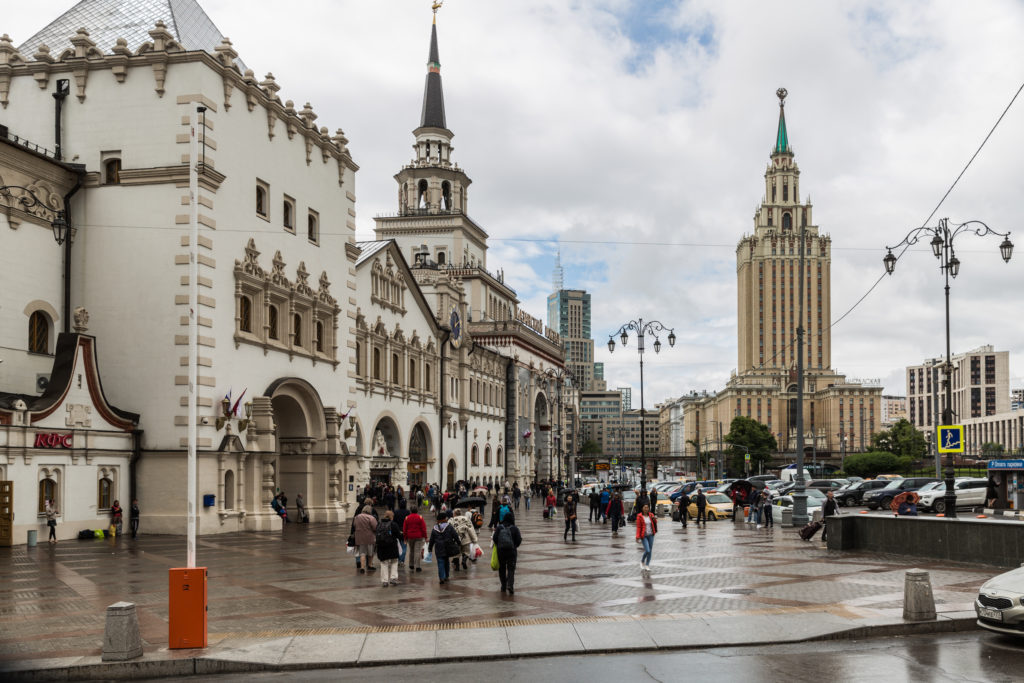
മോസ്കോ
അതിനു ശേഷം സ്റ്റാലിന്റെ രഹസ്യപോലീസ് ആയിരുന്ന NKVD രാജ്യമാസകാലം ഒട്ടനവധി പേരെ അറസ്റ്റ് ചെയ്യുകയും വധിക്കുകയും ചെയ്തു. കീറോവിന്റെ മരണം നടന്ന 1934 നും 1936 നും ഇടയ്ക്കു NKVD 529,434 പേരെ അറസ്റ്റ് ചെയുകയും അതിൽ 4402 പേരെ വധിക്കുകയും ചെയ്തു. 1937 നും 1938 നും ഇടയ്ക്കു NKVD 1,575,259 അറസ്റ്റുകളും 681,692 വധങ്ങളും നടത്തുകയുണ്ടായി [25]. 1936 – 38 കാലത്തു രാജ്യമെമ്പാടും കുപ്രചരണം അഴിച്ചു വിടുകയും അത് വഴി തങ്ങളുടെ കൊലപാതകങ്ങളെ ന്യായീകരിക്കാനും സ്റ്റാലിനും പാർട്ടിയും ശ്രമിച്ചു [26].
ഈ ഭീകരാവസ്ഥ നടപ്പിലാക്കുന്ന NKVD യെപ്പോലും സ്റ്റാലിൻ വെറുതെ വിട്ടില്ല. 1936 നും 1938 നും ഇടയ്ക്കു NKVD ഉദ്യോഗസ്ഥർ ആയ 20000 പേർ അറസ്റ്റ് ചെയ്യപ്പെട്ടു. റെഡ് ആർമിയിലെ ഒട്ടനവധി ഉയർന്ന ഉദ്യോഗസ്ഥർക്ക് ജീവൻ നഷ്ടപ്പെട്ടു [27]. 144000 ഓഫീസർമാരിൽ 33000 പേരെ അവരുടെ സ്ഥാനത്തു നിന്നും മാറ്റി. 7000 ത്തോളം പേരെ വധിച്ചു. 767 ഉന്നത ഉദ്യോഗസ്ഥരിൽ 500-600 ഓളം പേരെ കൊല ചെയ്യുകയോ ജയിലിലടക്കുകയോ ചെയ്തു [28]. ഇത്തരം വധങ്ങൾ രാജ്യത്തിൻറെ യുദ്ധസന്നദ്ധതയെ പോലും ബാധിച്ചു. മാർഷൽ തുക്കച്ചേവ്സ്കിയെയും അത് പോലെ ഉള്ള ഉയർന്ന സൈനിക ഉദ്യോഗസ്ഥരെയും ഇല്ലാതാക്കിയത് 1939 ആകുമ്പോഴേക്കും റെഡ് ആർമി വളരെ ബലഹീനമാക്കി [29]. കമ്മ്യൂണിസ്റ്റ് പാർട്ടിയും സ്റ്റാലിന്റെ ഭീകരവാഴ്ചക്കു ഇരയായി. സെൻട്രൽ കമ്മിറ്റിയിലെ 139 മെമ്പർമാരിൽ 98 പേർ വധിക്കപ്പെട്ടു [30].
1937 ജൂലൈ 31 നു സ്റ്റാലിൻ തന്റെ രഹസ്യ ഓർഡർ 00447 പുറത്തിറക്കി. ഈ ഓർഡർ പ്രകാരം ഓരോ ‘ശത്രു’വിനെയും ഒന്നുകിൽ വധ ശിക്ഷ അർഹിക്കുന്ന ആൾ, അല്ലെങ്കിൽ നാടുകടത്തപെടേണ്ട ആൾ എന്ന് രണ്ടായി തരാം തിരിച്ചു. ഇതിന്റെ അടിസ്ഥാനത്തിൽ ദേശീയ തലത്തിലും പ്രാദേശിക തലത്തിലും ക്വൊട്ടകൾ ഉണ്ടാക്കി. ദേശീയ തലത്തിൽ 76000 പേരെ വധിക്കാനും 193000 പേരെ ഗുലാഗുകളിൽ അടക്കാനും തീരുമാനിച്ചു [31]. അതായതു കുറ്റം ചെയ്ത വ്യക്തികളെ കണ്ടുപിടിച്ചു തെളിവുകളുടെ അടിസ്ഥാനത്തിൽ ശിക്ഷിക്കുന്നതിനു പകരം, രാജ്യവ്യാപകമായി ക്വൊട്ടകൾ ഉണ്ടാക്കി അത് നികത്താൻ വേണ്ടി വ്യക്തികളെ കണ്ടുപിടിക്കുക എന്ന തീരുമാനം ആണ് സ്റ്റാലിൻ എടുത്തത്. ഓരോ പ്രദേശത്തെയും NKVD ഉദ്യോഗസ്ഥന്മാർ തങ്ങളുടെ കോട്ട നികത്താനും പലപ്പോഴും ക്വൊട്ടയിൽ ഉള്ളതിനേക്കാൾ കൂടുതൽ പേരെ വധിക്കാനും ഉത്സാഹം കാണിച്ചു [32]. 1938 ആയപ്പോഴേക്കും സ്റ്റാലിൻ തന്റെ great terror പ്രവർത്തനങ്ങൾ അവസാനിപ്പിച്ചു. കമ്മ്യൂണിസ്റ്റു പാർട്ടിയിലെ അധികാര കേന്ദ്രീകരണവും, സ്റ്റാലിന്റെ വ്യകതിത്വവും കൂടി ചേർന്ന ഒരു അവസ്ഥയാണ് great terror നു വഴി തെളിയിച്ചത് എന്ന അനുമാനത്തിനപ്പുറം എന്തൊക്കെ ആണ് സ്റ്റാലിനെ ഈ നടപടിക്ക് പ്രേരിപ്പിച്ചത് എന്നതിന് ഒരു വ്യക്തമായ മറുപടി ഇന്നും ഇല്ല.
References:
- http://repository.un.org/bitstream/handle/11176/246001/A_C.3_58_9-EN.pdf
- http://www.lucorg.com/news.php/news/2241
3.http://euromaidanpress.com/2015/11/07/see-which-countries-recognize-ukraines-holodomor-famine-as- genocide-on-an-interactive-map/#arvlbdata
- “Mass starvation of 1933 was the result of Stalin’s first five year plan” – Bloodlands: Europe between Hitler and Stalin, Timothy Snyder – Page 24
- “In the first four months of 1930, 113,637 people were forcibly transported from Soviet Ukraine as kulaks. All in all, some three hundred thousand Ukrainians were among the 1.7 million kulaks deported to special settlements”. – Snyder Pages 26–27
- “Failure of first collectivized harvest was obvious. The reasons were many : weather was poor, pests were a problem; animal power was limited because peasants had sold or slaughtered their livestock; the production of tractors was far less than anticipated; the best farmers have been deported; sowing and reaping were disrupted by collectivization; and peasants who had lost their land saw no reason to work hard ” – Snyder, Page 33
- By this time, Stalin was on vacation, having traveled in a train well stocked with fine provisions south from Moscow through the starving Ukraine to the pretty resort twon of Sochi on the Black Sea. He and Kaganovich wrote to each other confirming their shared view of the famine as a plot directed against them personally. – Snyder, Page 37
- “Thus a starving peasant could be shot if he picked up a potato peel from a furrow in land that until recently had been his own”. – Snyder, Pages 38-39
- “On 20 November 1932, a meat penalty was introduced. Peasants who were unable to make grain quotas were now required to pay a special tax in meat. Peasants who still had livestock were now forced to surrender to the state”. As a peasant girl remembered ‘whoever had a cow, did not starve’. – Snyder, Page 43
- “Yet the vast majority of the dead and dying in Soviet Ukraine were peasants, the very people whose labors had brought what bread was to the cities. The Ukrainian cities lived, just, but the Ukrainian countryside was dying.” – Snyder, Page 23
11 . “As starvation raged throughout Ukraine in the first weeks on 193, Stalin sealed the borders of the republic so the peasants could not flee, and closed the cities so the peasants could not beg… On 22 January 1933 Balytskyi warned Moscow that Ukrainian peasants were fleeing the republic, and Stalin and Molotov ordered the state police to prevent their flight. The next day sale of long-distance rail tickets to peasants were banned… By end of February 1933, some 190,000 peasants had been caught and sent back to their home villages to starve.” – Snyder, Page 45
12 . “Marriages suffered as wives, sometimes with their husbands’ anguished consent prostituted themselves with local party leaders for flour. Some parents loved their children by protecting them, locking them in cottages to keep them safe from the roving hands of cannibals. (Page 49). At least 2505 people were sentenced for cannibalism in the years 1932 and 1933 in Ukraine, though the actual number of cases were certainly much greater. ” – Synder, Page 49
13..”The soviet census of 1937 found eight million fewer people than projected: most of these were famine victims in Soviet Ukraine, Soviet Kazakhstan and Soviet Russia, and the children that they did not have. Stalin suppressed its findings and had the responsible demographers executed”. – Snyder, Page 53
- “Bukharin told Kamenev…. ‘It would be a lot better if in the politburo we had Zinoviev and Kamanev instead of Stalin'” – Stalin, Paradoxes of Power 1878 – 1928, Stephen Kotkin , Page 714
- “Kamenev at 14h Party Congress: ‘I have come to the conclusion that Comrade Stalin cannot perform the function of unifying the Bolshevik headquarters'” , ibid , Page 581
- “Zinoveiv : ‘.. there is Stalin’s dictatorship. Illich was a thousand times correct’ ” – ibid , Page 507
- “Trotsky, Zinoveiv and Kamenev had belatedly formed what they called the United opposition, and by early October 1926 were gathering once more at Kamenev’s Kremlin apartment to discuss strategy, now with Zinoveiv expelled from Politburo.” – ibid , Page 614
- “Soviet society had astonishingly little political opposition of any kind…. There was no immediate threat ” – Stalin, Waiting for Hitler 1929- 1941 , Stepehen Kotkin – Page 306
- See the opinions of various historians – ibid Page 306-307
- See various theories and beliefs of Stalin – ibid Page 309
- “At Stalin’s suggestion, to get Nikolayev to admit complicity in a ‘group’, he was plied with food, cigarettes and the issue of promises to spare his own and his family members’ lives’ .. NKVD drafted a scenario which Stalin edited..” – ibid ,Page 210
- “Stalin was insisting on a high-profile public trial, broadcast live, and Yezhov applied pressure so that people under arrest begain to be re-interrogated to build a story line of a ‘united center'” – ibid 319.
- “Yezhov was furiously driving the extraction of ‘testimony’ for the trial of a ‘Trotskiyite-Zinovievite Terrorist Center’ in Moscow.
- “But well before the end of the seventy two hour period for appeals specified in the soviet law, Kamenev, Zinoviev and the rest were executed in the cellars” – ibid, Page 333
- ibid, Page 305
- “Stalin pressed for wider arrests… he dispatched a secret circular (July 29,1936) – drafted by Yezhov and edited by the dictator – to party organizations, which was to be read alound to all party members and which quoted the ‘testimony’ of the various accused ‘Trotskyites’ – ibid 324
- “Between 1936 and 1938, arrests of NKVD personnel exceeded 20,000” – ibid, Page 376
- “Out of approximately 144,000 officers, some 33,000 were removed in 1937-38, and Stalin ordered or incited the irreversible arrest of around 9,00 and the execution of perhaps 7000 of them. Of the 767 most high ranking commanders, at least 503- and by some accounts more than 600- were executed or imprisoned. And among the highest rungs of 186 commanders of division, the carnage took 154, as well as 8 of the 9 admirals, 13 of the army’s 15 full generals, and 3 of its marshals.” – ibid, Page 378.
- “This urgent need for allies stemmed in part from the dangerous weakening of the Red Army brought about two years earlier by Stalin’s bloody purge ” – Adolf Hitler, John Toland, Page 613
- “Of the 139 members of the central committee who took part in the party congress of 1934 (the Congress of Victors), some 98 were shot” – Europe between Hitler and Stalin, Timothy Snyder, Page 75.
- “Every potential enemy – as determined by administrative fiat – was to be either executed (category 1) or sent to distant points of the gulag (category 2)… Yezhov and Frinovsky used the submitted numbers to assign local arrest quotas totaling, Union-wide, 269000(76000 to be shot, 193000 to get eight to 10 years in the gulag)” – Stalin, Waiting for Hitler 1929- 1941 , Stepehen Kotkin – Page 452
- “Local NKVD officers had to explain why they could not meet a ‘limit’ and were encouraged to exceed them.” – Europe between Hitler and Stalin, Timothy Snyder, Page 81.

